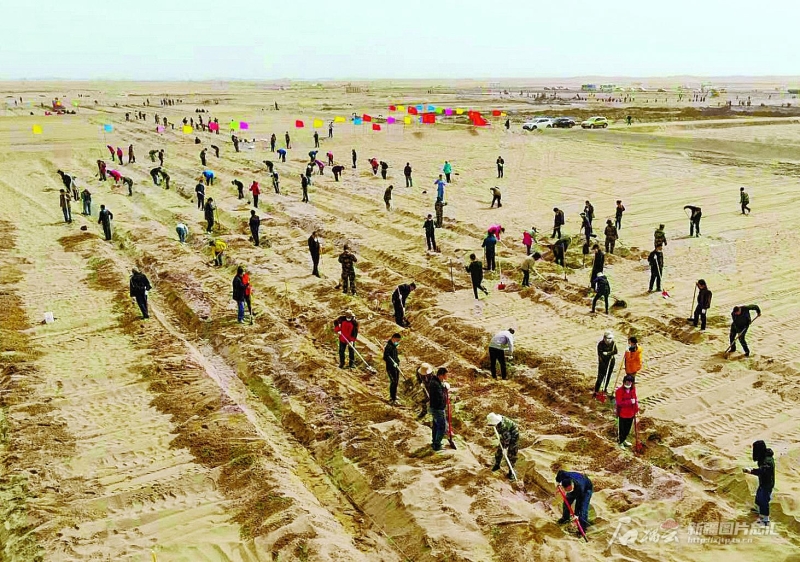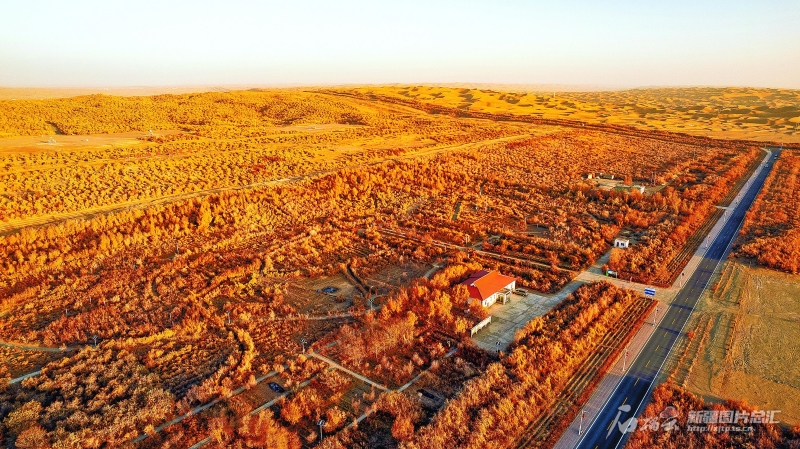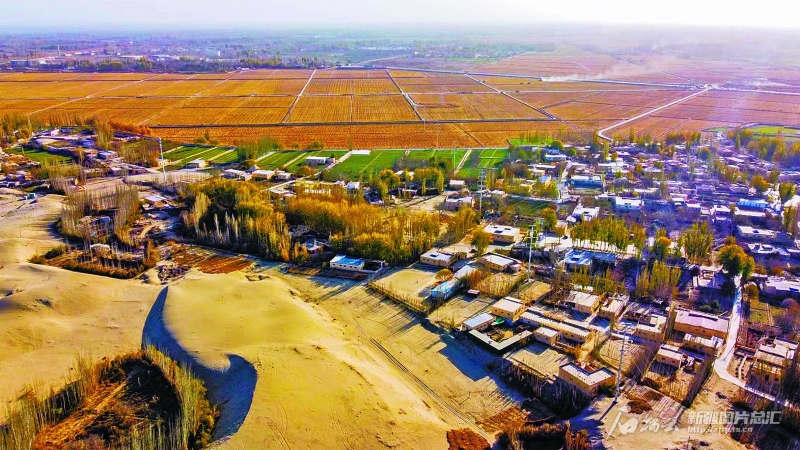
Photo taken on November 9, 2023 shows cadres plant trees in the Aiximan area of Ying’airike Township in Awat County, Aksu Prefecture, northwest China's Xinjiang Uygur Autonomous Region. As of now, 240,000 mu (about 16,000 hectares) of desertificated land has been restored in Awat County, Aksu Prefecture, northwest China's Xinjiang Uygur Autonomous Region. (Photo by Yang Shuo)

Aerial photo taken on November 19, 2023 shows a desert park of Tazhong oil and gas production management area in the hinterland of the Taklimakan Desert, northwest China's Xinjiang Uygur Autonomous Region. The desert park currently has over 10,000 mu (about 666.67 hectares) of green space with various types of plants. With the increase of vegetation, more than 10 types of wild animals such as hare and gerbil have settled here. (Photo by Tao)

Photo taken on November 23, 2023 shows a worker packs apples at Xinjiang Hongguo Agricultural Technology Development Co., Ltd., in Wensu County, Aksu Prefecture, northwest China's Xinjiang Uygur Autonomous Region. The desert greening project in Kekeya township has not only benefited Wensu County and the whole Aksu Prefecture in ecology, but also in economy. In 2022, the total area of characteristic forest and fruit cultivation in Aksu Prefecture reached 4.5 million mu (about 300,000 hectares), with a total output value of 18.203 billion yuan (about 2.55 billion U.S. dollars). (Photo by Aziz Samsak)

Photo taken on November 16, 2023 shows wheat field in Tumxuk City on the edge of the Taklimakan Desert, northwest China's Xinjiang Uygur Autonomous Region. In recent years, Tumxuk City has taken measures such as afforestation on sandy land and closure protection, resulting in a continuous increase in vegetation coverage. At the same time, significant results have been achieved in planting crops on the edge of the desert through measures such as improved varieties and refined management. (Photo by Wang Zhiqing)

Photo taken on November 23, 2023 shows farmers dig Cistanche deserticola at the cistanche town of Tawakule Township, Hetian County, Hotan Prefecture, northwest China's Xinjiang Uygur Autonomous Region. At present, the planting scale of the Haloxylon forest in the town has reached 40,000 mu (about 2666.67 hectares), with an annual output of 4,000 tons of fresh cistanche, which has become an important supporting industry that drives local residents to increase their income. (Photo by Xu Xiaolong)

Aerial photo taken on November 15, 2023 shows paddy fields in Daoxiang Village, Han’airike Township, Hetian County, Hotan Prefecture in northwest China's Xinjiang Uygur Autonomous Region. In recent years, the village, through land transfer, has cultivated 1,800 mu (about 120 hectares) of paddy with drought resistance, cold resistance, disease and pest resistance, which has become a pillar industry in the village. (Photo by Xu Xiaolong)
(A written permission shall be obtained for reprinting, excerpting, copying and mirroring of the contents published on this website. Unauthorized aforementioned act shall be deemed an infringement, of which the actor shall be held accountable under the law.)









